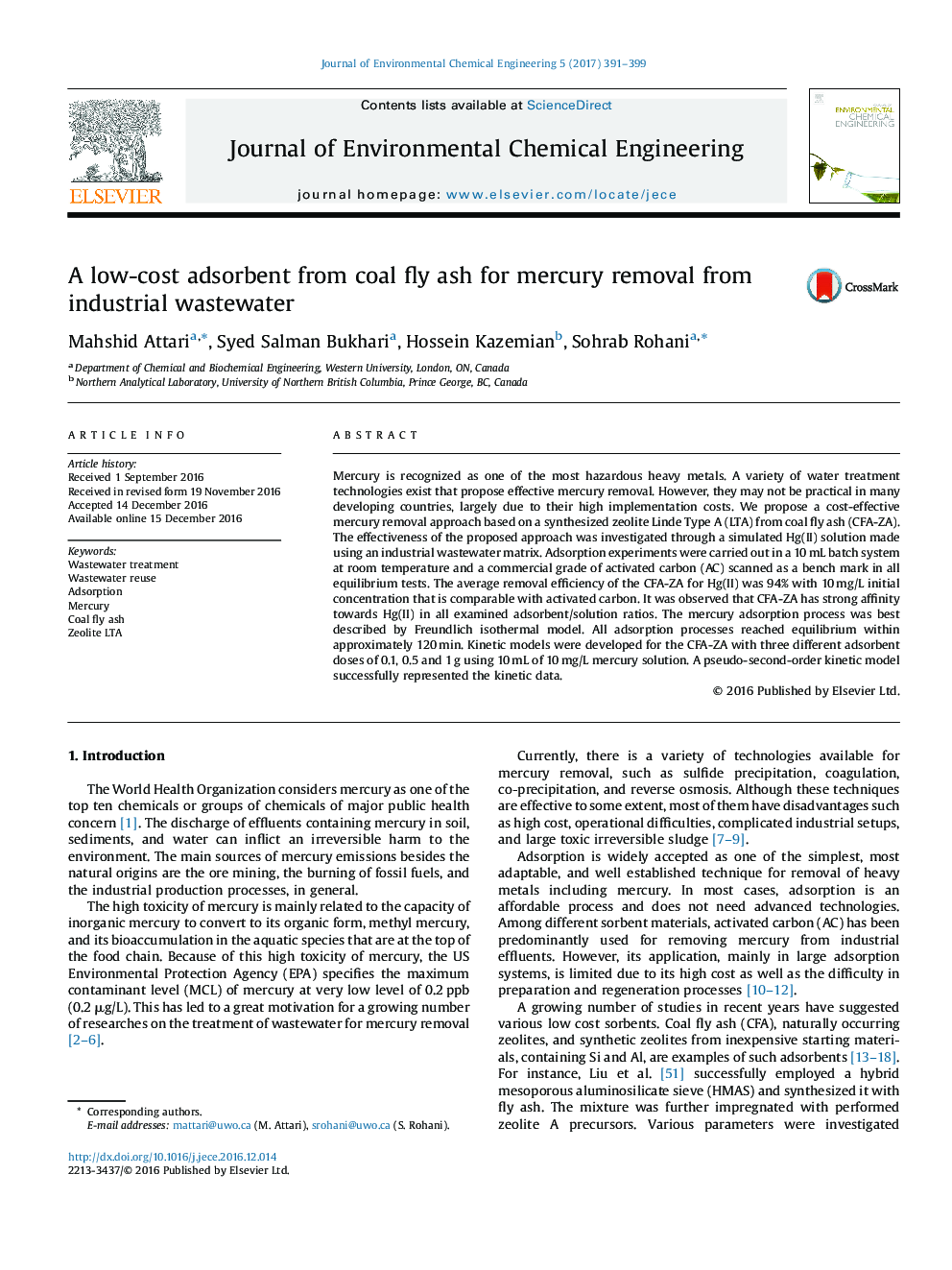| Article ID | Journal | Published Year | Pages | File Type |
|---|---|---|---|---|
| 6477367 | Journal of Environmental Chemical Engineering | 2017 | 9 Pages |
â¢Zeolite LTA synthesized from coal fly ash, CFA-ZA is proposed for mercury removal.â¢Removal efficiency of CFA-ZA towards mercury is comparable with activated carbon.â¢Adsorption of mercury by CFA-ZA follows a pseudo-second-order kinetic model.â¢Freundlich isothermal model best explains the adsorption isotherms.â¢Both physisorption and chemisorption take place in the adsorption mechanism.
Mercury is recognized as one of the most hazardous heavy metals. A variety of water treatment technologies exist that propose effective mercury removal. However, they may not be practical in many developing countries, largely due to their high implementation costs. We propose a cost-effective mercury removal approach based on a synthesized zeolite Linde Type A (LTA) from coal fly ash (CFA-ZA). The effectiveness of the proposed approach was investigated through a simulated Hg(II) solution made using an industrial wastewater matrix. Adsorption experiments were carried out in a 10Â mL batch system at room temperature and a commercial grade of activated carbon (AC) scanned as a bench mark in all equilibrium tests. The average removal efficiency of the CFA-ZA for Hg(II) was 94% with 10Â mg/L initial concentration that is comparable with activated carbon. It was observed that CFA-ZA has strong affinity towards Hg(II) in all examined adsorbent/solution ratios. The mercury adsorption process was best described by Freundlich isothermal model. All adsorption processes reached equilibrium within approximately 120Â min. Kinetic models were developed for the CFA-ZA with three different adsorbent doses of 0.1, 0.5 and 1Â g using 10Â mL of 10Â mg/L mercury solution. A pseudo-second-order kinetic model successfully represented the kinetic data.
